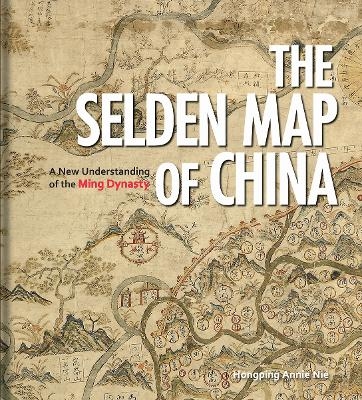
The Selden Map of China
A New Understanding of the Ming Dynasty
Seiten
2019
Bodleian Library (Verlag)
978-1-85124-524-6 (ISBN)
Bodleian Library (Verlag)
978-1-85124-524-6 (ISBN)
Dating from the Ming Dynasty, the Selden Map of China reveals a country very different from popular conceptions of the time. The enthralling story revealed by this extraordinary artefact is central to an understanding of the long history of China’s relationship with the sea and with the wider world.
Dating from the seventeenth century at the height of the Ming Dynasty, the Selden Map of China reveals a country very different from popular conceptions of the time, looking not inward to the Asian landmass but outward to the sea. Painted in multiple colours on three pieces of Mitsumata paper, this beautifully decorative map of China was discovered to be a seafaring chart showing Ming Dynasty trade routes. It is the earliest surviving example of Chinese merchant cartography and is evidence that Ming China was outward-looking, capitalistic and vibrant.
Exploring the commercial aims of the Ming Dynasty, the port city of Quanzhou and its connections with the voyages of the early traveller Zheng He, this book describes the historical background of the era in which the map was used. It also includes an analysis of the skills and techniques involved in Chinese map-making and the significance of the compass bearings, scale and ratios found on the map, all of which combine to represent a breakthrough in cartographic techniques.
The enthralling story revealed by this extraordinary artefact is central to an understanding of the long history of China’s relationship with the sea and with the wider world.
Dating from the seventeenth century at the height of the Ming Dynasty, the Selden Map of China reveals a country very different from popular conceptions of the time, looking not inward to the Asian landmass but outward to the sea. Painted in multiple colours on three pieces of Mitsumata paper, this beautifully decorative map of China was discovered to be a seafaring chart showing Ming Dynasty trade routes. It is the earliest surviving example of Chinese merchant cartography and is evidence that Ming China was outward-looking, capitalistic and vibrant.
Exploring the commercial aims of the Ming Dynasty, the port city of Quanzhou and its connections with the voyages of the early traveller Zheng He, this book describes the historical background of the era in which the map was used. It also includes an analysis of the skills and techniques involved in Chinese map-making and the significance of the compass bearings, scale and ratios found on the map, all of which combine to represent a breakthrough in cartographic techniques.
The enthralling story revealed by this extraordinary artefact is central to an understanding of the long history of China’s relationship with the sea and with the wider world.
Hongping Annie Nie is a Teaching and Research Associate of the University of Oxford China Centre and a Senior Member of St Anthony’s College, Oxford.
| Erscheinungsdatum | 01.07.2019 |
|---|---|
| Zusatzinfo | 40 Illustrations, color |
| Sprache | englisch |
| Maße | 237 x 259 mm |
| Gewicht | 722 g |
| Themenwelt | Geisteswissenschaften ► Geschichte ► Hilfswissenschaften |
| Geisteswissenschaften ► Geschichte ► Regional- / Ländergeschichte | |
| Naturwissenschaften ► Geowissenschaften ► Geografie / Kartografie | |
| ISBN-10 | 1-85124-524-3 / 1851245243 |
| ISBN-13 | 978-1-85124-524-6 / 9781851245246 |
| Zustand | Neuware |
| Haben Sie eine Frage zum Produkt? |
Mehr entdecken
aus dem Bereich
aus dem Bereich
Anforderungen an das digitalisierte Kulturerbe
Buch | Softcover (2023)
transcript (Verlag)
29,00 €
innovative Wege der Konzeption und Evaluation von Ausstellungen
Buch | Softcover (2024)
transcript (Verlag)
37,00 €


